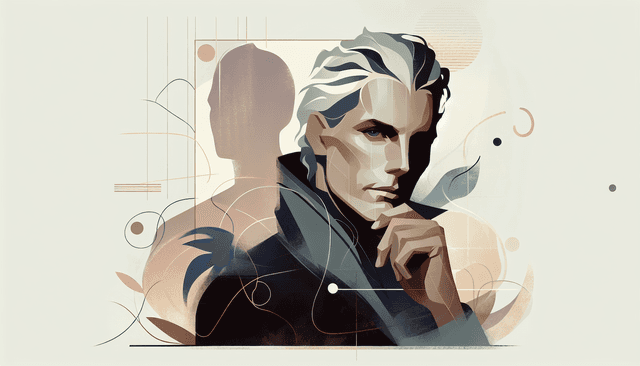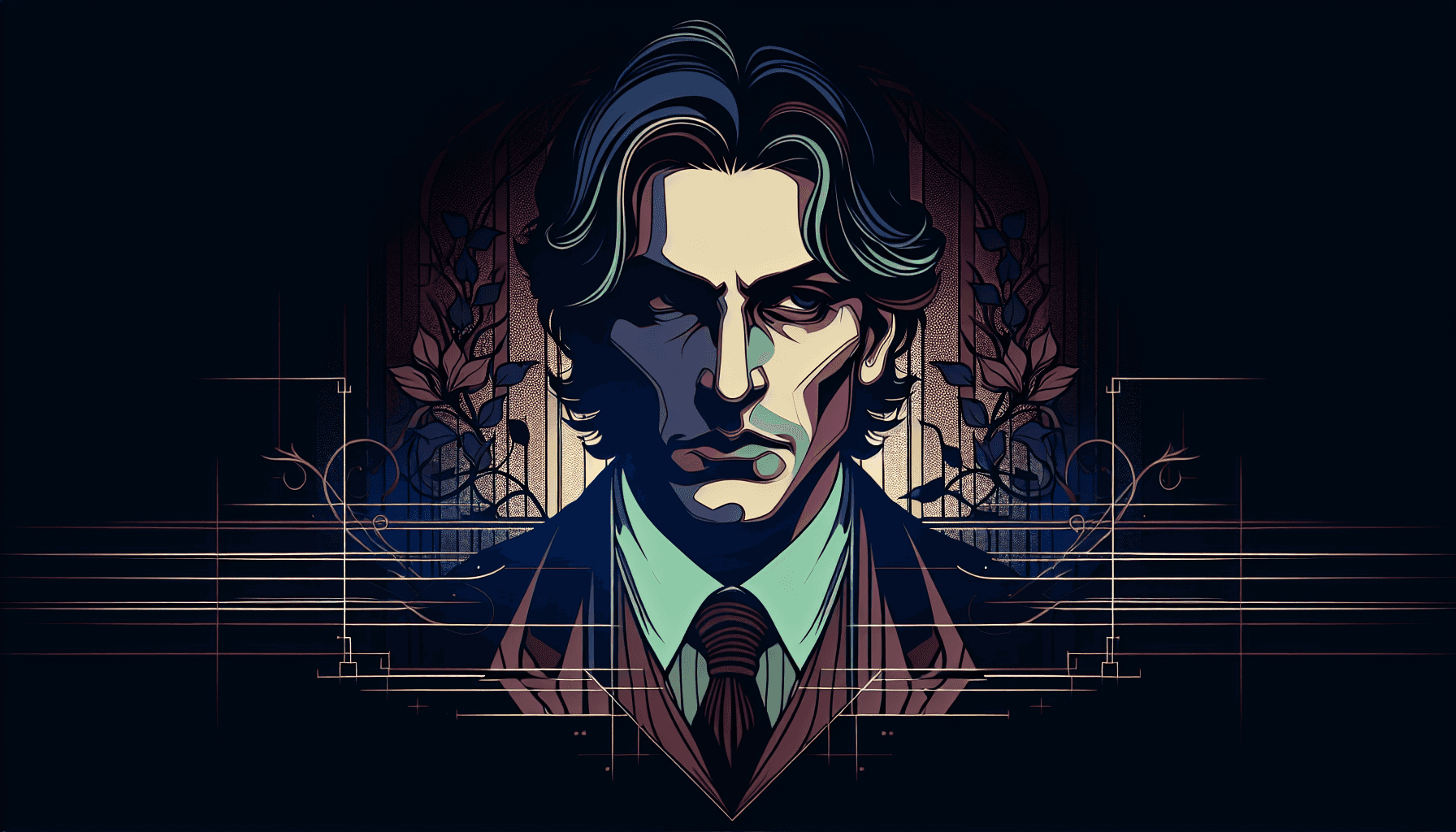Table of Contents
Creating a great villain can feel like a daunting task. You might wonder what makes them compelling and memorable beyond just being evil for the sake of it. We’ve all experienced those stories where the villain just doesn’t hit the mark, right?
But fear not! If you stick with me, we’ll explore the essential traits and characteristics that turn a flat bad guy into an unforgettable antagonist. By the end, you’ll have a solid understanding of how to craft your own villain that readers—or viewers—will love to hate.
We’ll dive into the traits that define a good villain, from their complex motivations to their relatable flaws, including how to connect them meaningfully to your hero. Let’s make your bad guy the best part of your story!
Key Takeaways
- A good villain has distinct traits that make them both relatable and complex, often seeing themselves as heroes.
- They should be proactive, driving the action with power that poses a real threat to the hero.
- Complex motivations enhance their character; relatable flaws can evoke empathy from the audience.
- A memorable villain has depth, with layers of conflicting feelings or a tragic backstory.
- Clear objectives guide their actions, creating tension and conflict with the hero.
- Charisma and intelligence make villains captivating, encouraging emotional investment from readers.
- Connections to the hero deepen the narrative, often showcasing shared traits or backgrounds.
- Flaws and vulnerabilities make villains more human and relatable, adding complexity to their character arc.
- The right blend of these elements creates a villain that challenges the hero both physically and morally, ensuring a memorable story.

1. Identify Key Traits of a Good Villain
A well-crafted villain typically has distinct traits that resonate with audiences.
Think about how villains often see themselves as heroes in their own stories; they believe they are acting for a greater good.
Common characteristics include intelligence, charm, and confidence, which can make them incredibly compelling and relatable.
As you brainstorm your character, consider traits like ambition or charisma, which can draw audiences in.
For example, characters like Loki from the Marvel Universe are loved for their complexities and charm, making them memorable.
Having a blend of traits that make them both likable and detestable can result in creating a truly impactful antagonist.
2. Establish Power and Proactivity
A great villain is proactive, which means they drive the action and make things happen.
They should possess a level of power that poses a genuine threat to the hero, creating suspense and tension in your story.
Think about the classic trope of the powerful villain—often, they have resources, intelligence, and motivation to match or exceed that of the hero.
Consider how the villain’s actions can initiate key plot developments; if they remain passive, the story risks becoming dull.
For instance, in *Harry Potter*, Voldemort’s quest for power is relentless, shaping the entire series’ story arc.
Establish your villain as someone who is always a few steps ahead, which effectively raises the stakes for your hero.
3. Create Complex Motivations
Your villain’s motivations should go beyond mere evil; they need to feel real and relatable.
Explore their backstory and what drives them to commit heinous acts—are they seeking revenge, love, or recognition?
For example, the character of Magneto in *X-Men* is motivated by his traumatic past, leading him to fight for mutant superiority in a world that oppresses them.
When creating your villain’s motivations, consider how they parallel the hero’s goals, making their conflict more poignant.
As audiences, we often resonate more with villains when we can understand their pain or desires; this adds depth to the story.
Ultimately, an effective villain should make readers question their own values, enriching the overall narrative experience.

“`html
4. Make the Villain Relatable and Human
A relatable villain can create a more engaging story because they evoke empathy from the audience.
Instead of painting your villain as purely evil, give them human traits that your readers can connect with.
Even villains like *Breaking Bad’s* Walter White start as sympathetic characters with understandable motivations.
This approach allows audiences to see the villain’s flaws and challenges, making them more than just a one-dimensional character.
According to a study published in Psychological Science, audiences are often drawn to villains who mirror their traits.
This means crafting a villain with relatable flaws can deepen the audience’s emotional investment in your story.
5. Develop Depth and Complexity
Depth and complexity set apart memorable villains from forgettable ones.
Your villain should have layers—perhaps they have a tragic backstory, conflicting feelings, or even a moral code.
Creating a villain with these attributes allows for richer storytelling and more engaging plotlines.
For instance, characters like Thanos from the *Marvel Cinematic Universe* have strong motivations that allow them to maintain a complex persona throughout the series.
It’s vital to portray how their thoughts and actions shape their decisions, allowing readers to explore the intricacies of their personality.
According to data from research, physiological and psychological traits significantly lead to audience antipathy, highlighting that complexity resonates with viewers.
6. Define Clear Objectives and Actions
Your villain should have clear goals that drive their actions throughout the story.
These objectives give your villain purpose and serve as the catalyst for conflict with the hero.
For example, the Joker in *The Dark Knight* seemingly seeks chaos, but his true objective is to challenge Batman’s ethos.
Ensure your villain’s actions align with their defined objectives to maintain consistency, which makes them more believable.
Employing a check on objectives can clarify motivations: Is your villain’s goal achieving power, revenge, or perhaps recognition?
Understanding their aims creates a chess game-like dynamic in your story, increasing tension and engagement for the reader.
7. Build Charisma and Intelligence
A charismatic villain often draws readers in and holds their attention.
Consider villains like Hannibal Lecter, whose intelligence and charm make him both captivating and terrifying.
To create this charisma, develop dialogue that showcases wit and confidence, making your villain the highlight of scenes.
Intelligence plays hand-in-hand with charisma; clever schemes create a layer of intrigue, forcing the hero to stretch their limits.
This duality encourages readers to invest emotionally, wondering how the villain might outsmart the hero next.
Building your antagonist’s charisma can lead to memorable quotes and exchanges that resonate with the audience.
8. Connect the Villain to the Hero
A strong connection between your villain and hero enhances the narrative’s stakes and emotional impact.
When they share commonalities, it creates a “dark mirror” effect, illustrating the thin line between good and evil.
Consider the dynamic between Batman and the Joker; their relationship raises questions about morality and justice.
To establish these ties, explore shared backgrounds, motivations, or even mutual enemies.
This connection can lead to climactic confrontations that not only entertain but force both characters to evolve.
As an added bonus, your audience may engage more deeply when they see how obstacles shape both characters.
9. Include Flaws and Vulnerabilities
No character is perfect, and your villain should be no exception.
Flaws make your villain relatable and multidimensional, allowing readers to see their struggle and insecurities.
For instance, even powerful villains like Sauron from *The Lord of the Rings* are ultimately limited by their desire for control.
Showcasing vulnerabilities can create moments of tension and conflict, ultimately leading to a more engaging story arc.
Acknowledging these flaws also gives heroes the opportunity to exploit them, which can serve as a pivotal point in the storyline.
Crafting a villain who stumbles as they pursue their goals adds depth and creates room for character growth.
10. Summarize the Essentials for Crafting a Memorable Villain
Creating a memorable villain involves a variety of elements working together harmoniously.
From relatability and motivation to charisma and depth, each component adds richness to your character.
As you design your villain, keep in mind that they should pose a real threat and act as a catalyst for your hero’s journey.
Ultimately, a well-crafted villain should challenge the hero not just physically, but also emotionally and morally.
This complexity leads to more engaging storytelling and resonates well with readers, whether they sympathize or despise your villain.
By following these tips, you can develop a villain that captivates audiences, leaving a lasting impression long after the story concludes.
“`
FAQs
A good villain typically possesses strong motivations, charm, complexity, and clear objectives. They should also exhibit flaws and vulnerabilities, making them more relatable and enhancing the overall story dynamic.
To make your villain relatable, incorporate human emotions, personal struggles, and motivations that mirror those of the audience. Show their insecurities and complexities to create empathy, despite their actions.
Complexity adds depth to a villain and makes them more than a mere antagonist. It helps create intrigue, allowing audiences to understand their motivations while fostering a richer narrative, ultimately enhancing the story.
Showcase a villain’s vulnerability through backstory, internal conflicts, or moments of hesitation. Highlighting their fears and flaws allows the audience to see them as multifaceted characters rather than one-dimensional evildoers.



